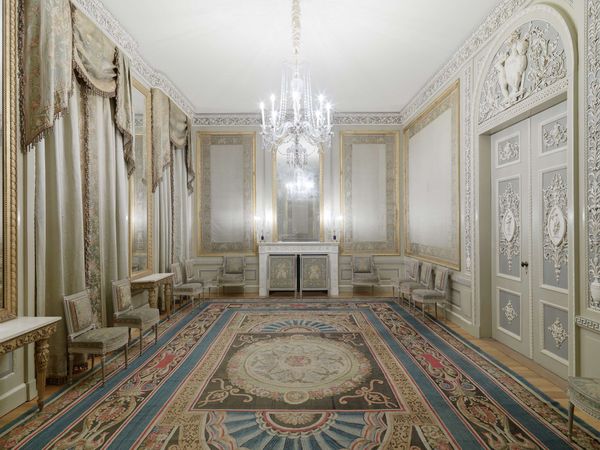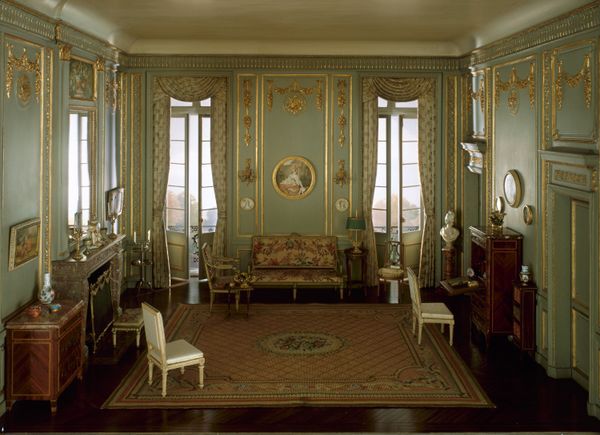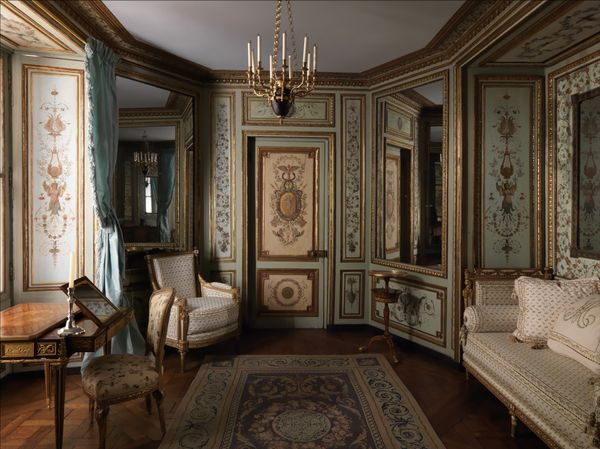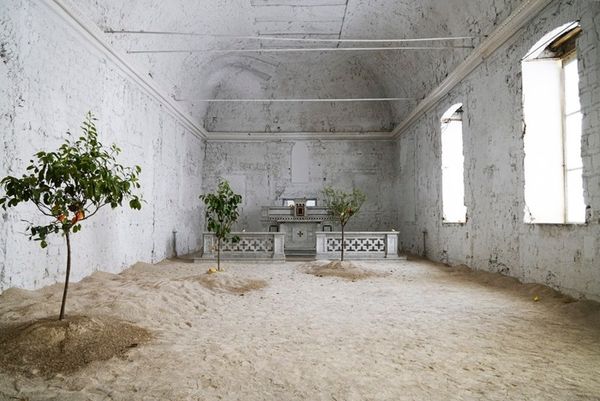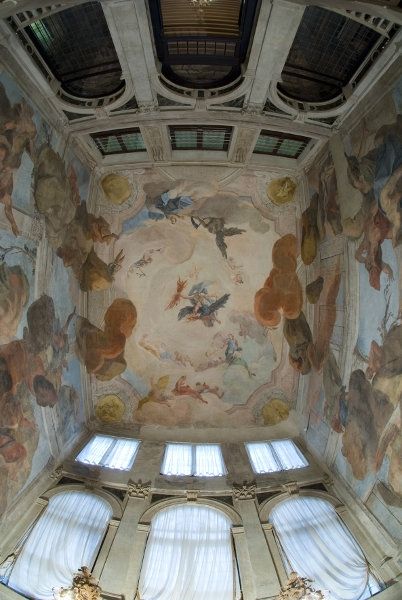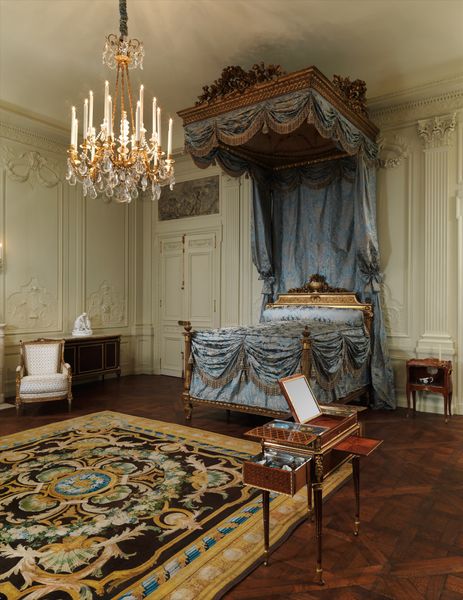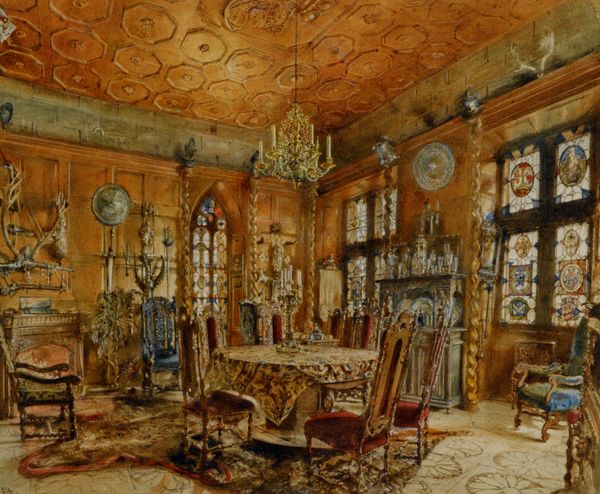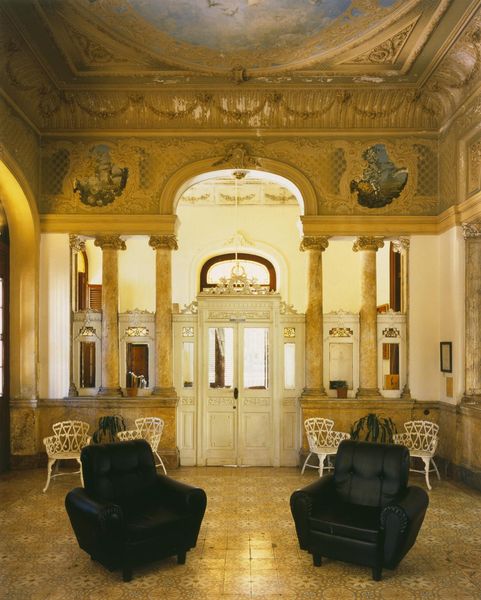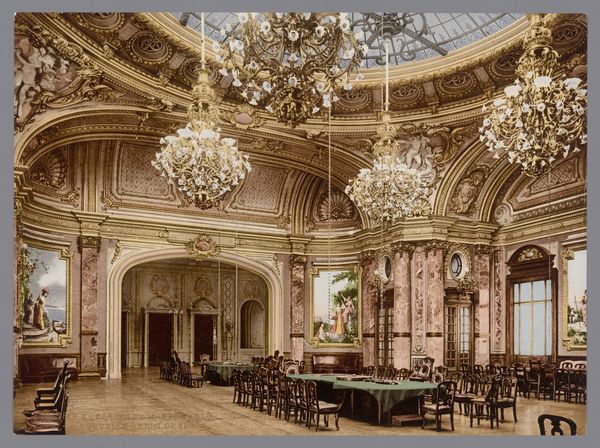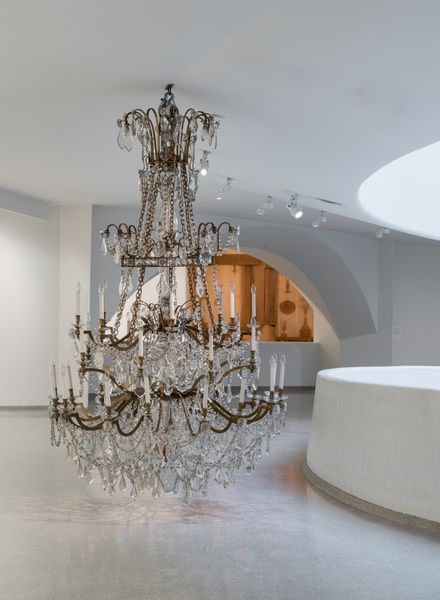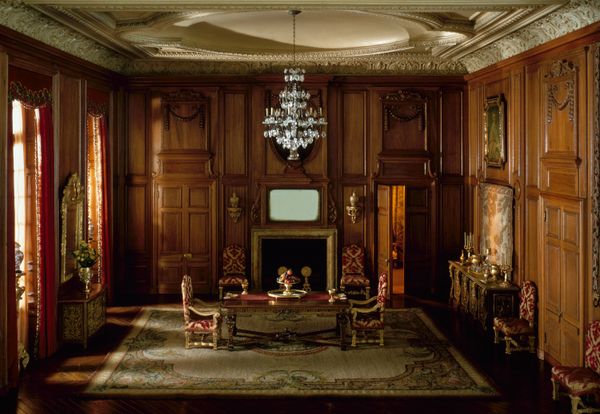
Copyright: Gian Maria Tosatti,Fair Use
Curator: My immediate feeling is one of melancholic beauty. The opulence of the Baroque architecture is overwhelmed by this… covering. It feels like a forgotten space. Editor: Exactly. We're looking at Gian Maria Tosatti's "My heart is empty like a mirror - Catania Episode," from 2018. It’s a site-specific installation, essentially an ephemeral sculpture made in a public space. Curator: The symbolism is quite potent. The sheer volume of white material blanketing the space certainly speaks to absence, but also perhaps to a kind of cleansing, a blank slate… Is it snow, do we think? Salt, maybe? Editor: Symbolically, I see it functioning as a visual representation of collective memory, particularly how places and their cultural significance can be obscured or even erased over time through various socio-political forces. The “blankness” reflecting something about contemporary cultural priorities in Catania, and elsewhere. Curator: I agree. And the choice of a Baroque interior – a style historically tied to the Catholic Church's attempt to reassert its power through grandiose art during the Counter-Reformation – adds another layer. The piece, as installation, challenges the power structure of history itself. It asks who and what is memorialized, or indeed forgotten and buried. Editor: Notice the mirrors – obscured by the… whatever it is… but they’re there, suggesting self-reflection. This connects back to the piece’s title. Is Catania reflecting on its own "emptiness," its lost potential perhaps? It’s less about nostalgia and more about active questioning, isn't it? Curator: I would argue it extends beyond Catania. This is installation art as political statement about abandoned spaces. It could be interpreted as the decline of industry in a global context. Or is it a meditation on value? The baroque interior and the modern installation locked together to give and remove value from one another. Editor: Yes. It provokes introspection on individual, as well as community level about decay. It's incredibly effective. The contrast between the ornate architecture and this stark, engulfing…material is haunting. I leave with the question: What histories do we risk burying beneath our own contemporary concerns? Curator: For me, it's a challenge. Art can provide this liminal experience to rethink about those historic ruins that often became empty. But this time the emptiness comes with full spaces and challenges our views about past.
Comments
No comments
Be the first to comment and join the conversation on the ultimate creative platform.
